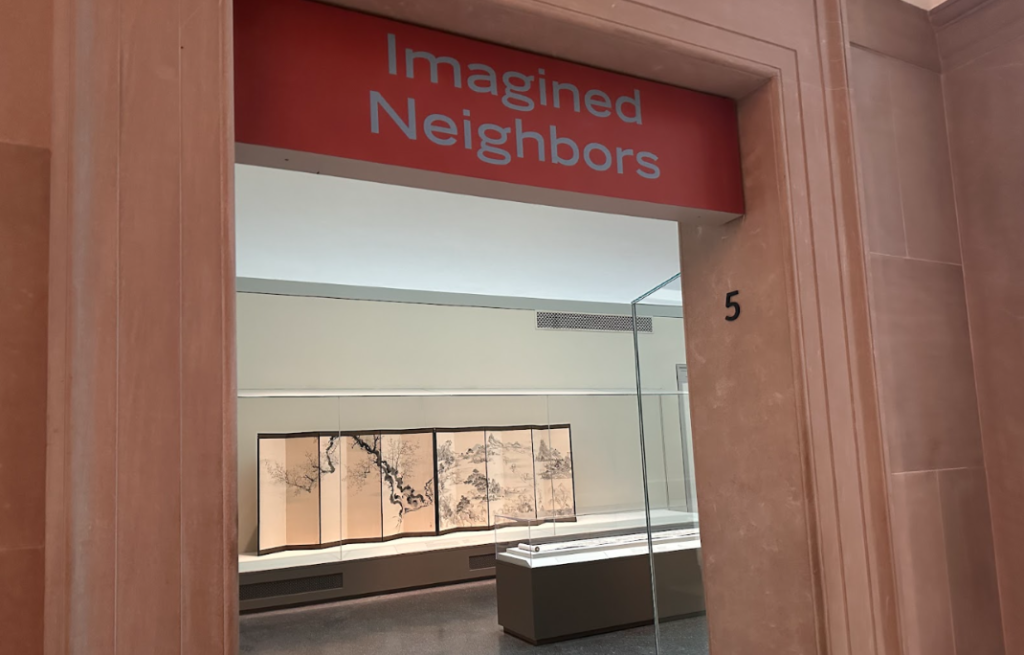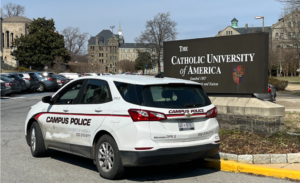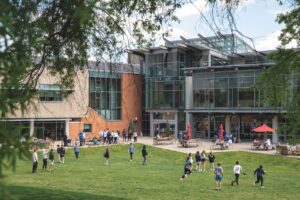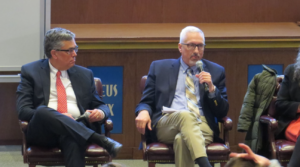See How Japan Saw China in Major National Museum of Asian Art Exhibition

Image By Dean Robbins
By Dean Robbins
The Freer Gallery of Art, which makes up half of the Smithsonian National Museum of Asian Art, has long struggled with its own uneasy relationship with colonialism. The gallery was founded by industrialist Charles Lang Freer who was an avid collector of Impressionist (and adjacent) paintings, particularly those of James McNeill Whistler, and various mediums of art from the Asian continent. Whistler himself collected Asian artworks, especially ceramics and more practical items like kimonos and fans. Freer, through his collecting, and Whistler, through his painting, promulgated an exoticization and Orientalization of Asian cultures. In this, the museum has always found a tension–of showing Asian art and, side by side, showing how it has been appropriated.
Imagined Neighbors: Japanese Visions of China, 1680-1980, on view through September 15, keeps this tension intact but in a different setting. The exhibition, which takes over all four rooms (numbers 5 through 8) of the museum’s Japan section, finds rich thematic material in understanding how Japanese artists admired and recreated Chinese aesthetic style and cultural traditions. These artists, whose origin was in the 17th century Edo period, were called literati.
Despite depicting a vast range of time periods, the exhibition is organized thematically rather than chronologically. The rooms can be generally understood in any order. Room 5 is titled “Immersive Environments” and focuses on the largest pieces, including long horizontal scrolls and polyptych screens. The title is accurate as the size of the screens make you feel like you are there. Additionally, many of the artists through the exhibition intentionally played with perspective anticipating how the viewer will get lost in their landscapes. Yosa Buson’s “Moon at Mount Emei” is a particularly strong example of this technique.
Photo By Dean Robbins
Room 6 is titled “Heroes” and includes seven vertical scroll works. Unlike in Room 5, the emphasis is more on characters depicted than nature. One memorable work here was “Lu Yu Testing Mountain Water,” by Taisho era inker Hashimoto Kansetsu whose subject was a serious water tester and “is believed to have possessed the ability to identify the locations from which a variety of waters were drawn.”.
Many of the works in this room and the rest of the exhibition include poetry that has been translated on the labels. Between the peaceful settings and meditative verse, Imagined Neighbors easily put me in a contemplative state. Nevertheless, this is often tempered by the awareness of Japan and China’s uneasy relationship, especially with works produced during the First and Second Sino-Japanese Wars. In this way, Imagined Friends is a microcosm of the Freer Gallery: a glance into the mythologies and aesthetics of the Asian continent through the lens of an outsider with questionable intentions.
Room 7 is entitled “Reclusion,” defined as “the mental or sometimes physical withdrawal from worldly affairs.” For the literati, the ink paintings were meant to offer a brief sense of reclusion, or escape, for the viewer. The curators also chose to extend the term to the most permanent form of reclusion: death. “Convalescing in Suita Village” is the last scroll inked by Tanomura Chikuden, and it is the exhibition’s only example of Zeppitsu, a work of poetry or painting made just before death.
Room 8, the final section, is about religion, particularly that of Daoism (also known as Taoism). “Dogen” by Suda Kokuta, one of the exhibition’s most recent works having been made in 1987, is the result of Zen calligraphy practice.
The exhibition is a must-see for any fan of Japanese inkery or anyone interested in the history of Chinese-Japanese relations. Imagined Neighbors: Japanese Visions of China, 1680-1980 runs at the Smithsonian National Museum of Asian Art in the Freer Gallery through September 15, 2024. Admission is free.







